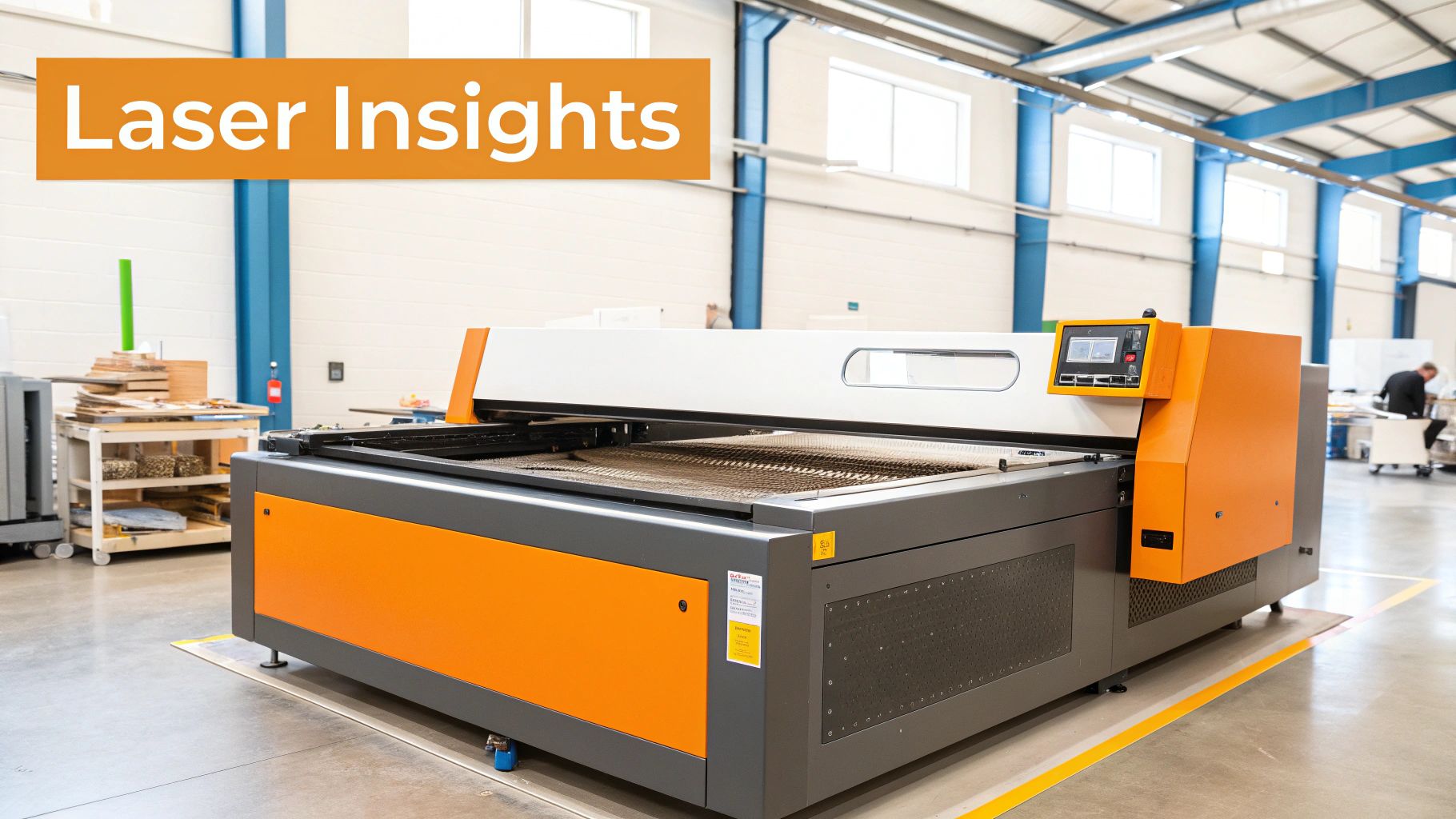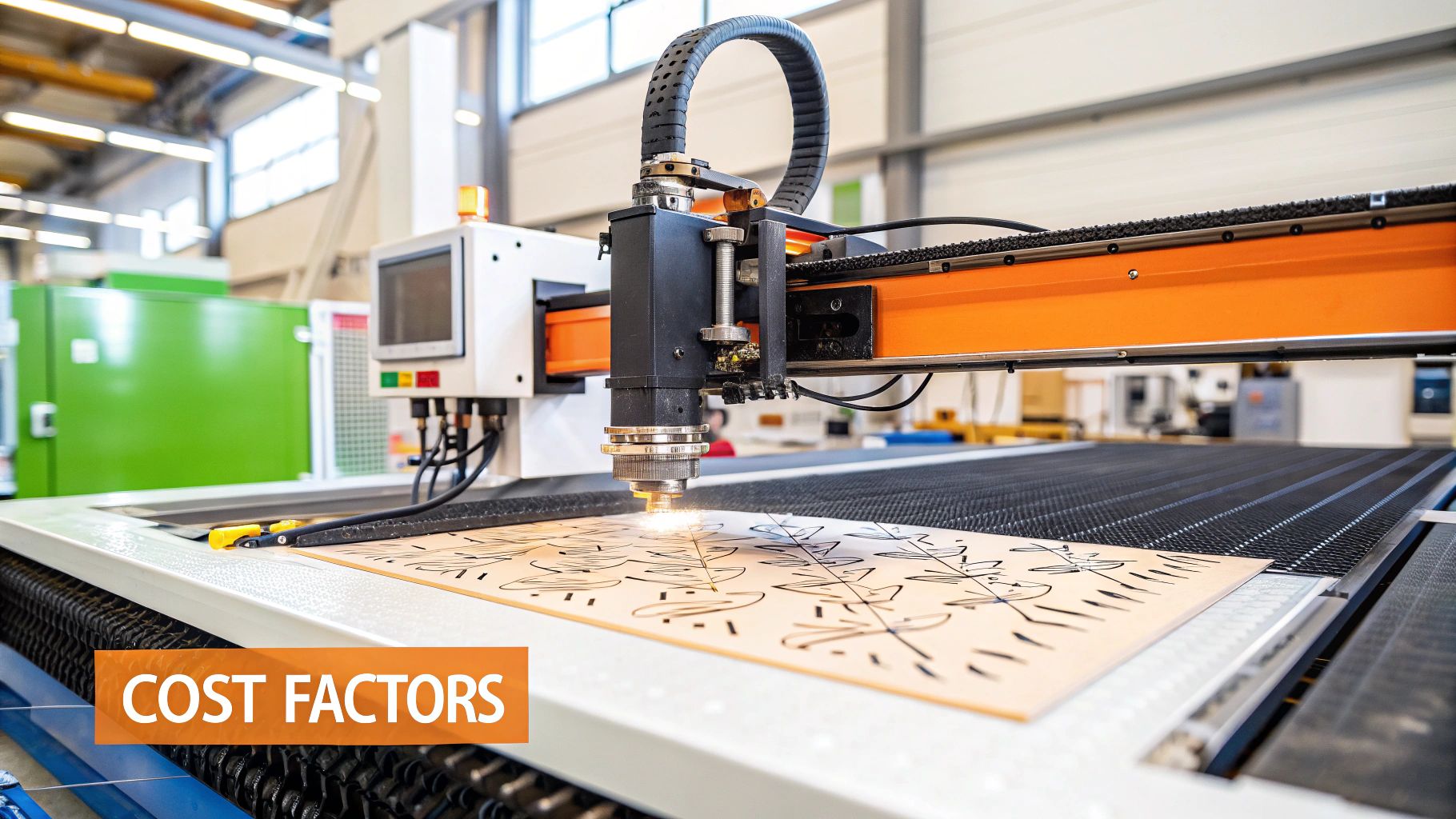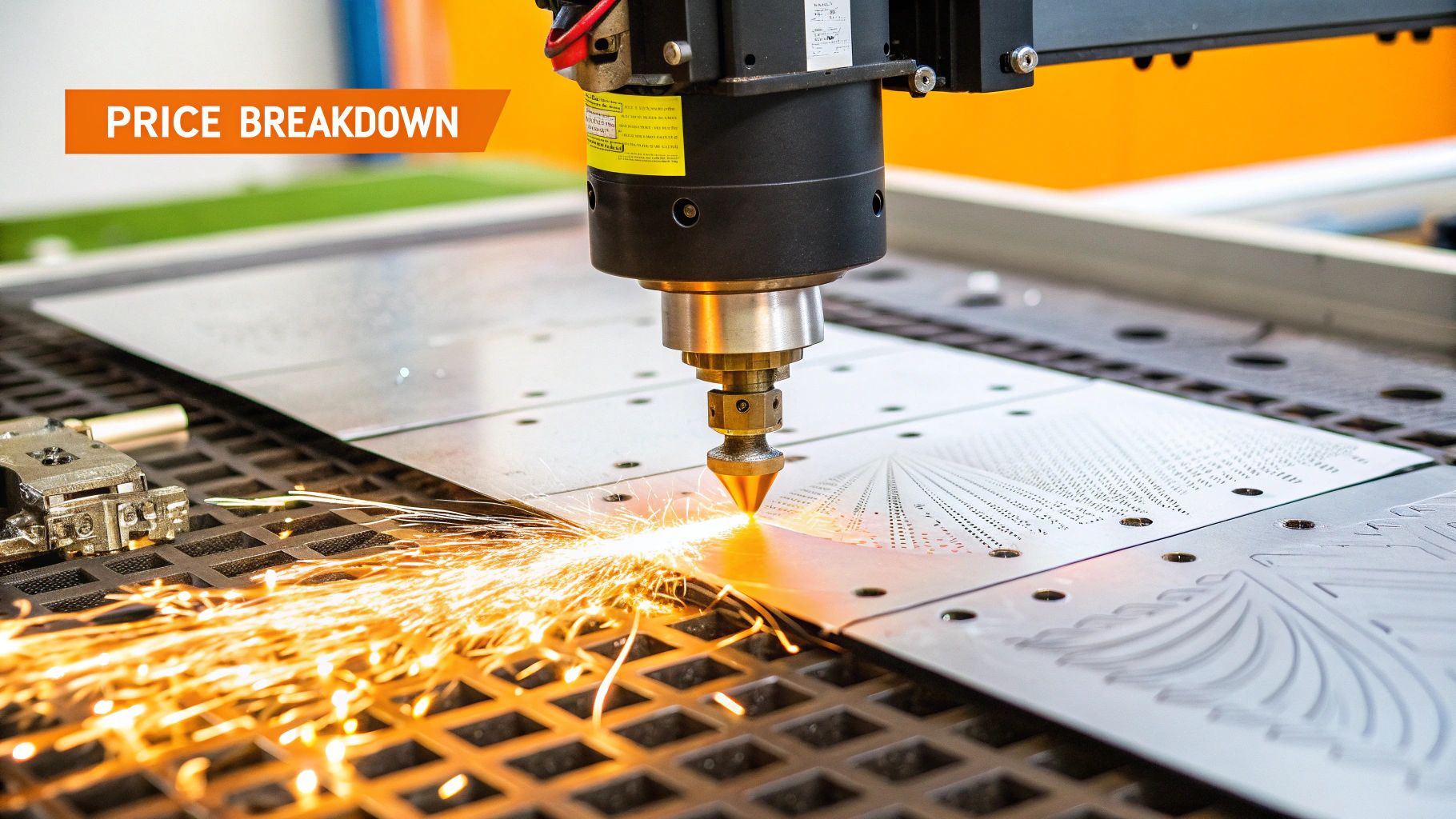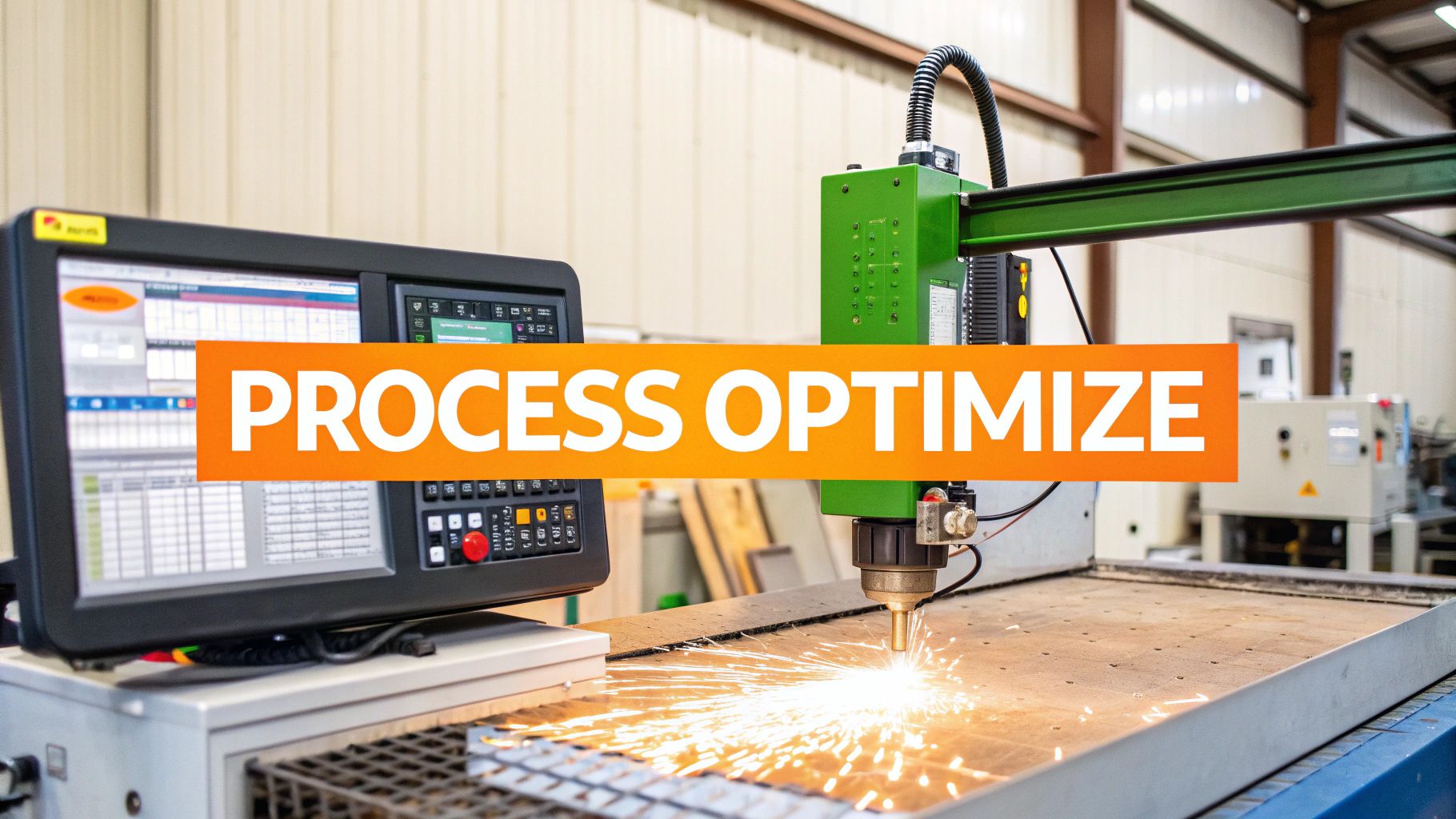The Evolving Landscape of Laser Cutting Costs
The laser cutting industry is in constant flux, shaped by advancements in technology, the fluctuating cost of materials, and the ever-shifting global market. Understanding these cost influences is critical for any business considering laser cutting technology. The increasing need for automation and precision is a major factor, pushing industries toward laser cutting for better productivity and less downtime.
Regional Disparities and Growth Opportunities
The laser cutting market varies significantly across the globe. North America, particularly the United States, currently dominates, driven by heavy investment from major players in the automotive and aerospace sectors. However, other regions are showing promising growth. Europe, with its strong emphasis on advanced manufacturing in countries like Germany and France, is also predicted to see continued growth. These regional differences create both opportunities and challenges for businesses in the laser cutting field, affecting everything from pricing strategies to market entry decisions.
To illustrate this global expansion, let's take a look at some recent market analysis. The worldwide laser cutting machine market, currently valued at approximately USD 7.12 billion in 2023, is projected to expand at a CAGR of 5.7% from 2024 to 2030. This growth is fueled by increasing demand related to industrial automation trends. Key industry users include the automotive, electronics, pharmaceutical, and HVAC sectors. Explore this topic further
The following table provides a more detailed breakdown of regional market share and anticipated growth:
Regional Laser Cutting Market Share and Growth Rates
Comparative breakdown of market share and growth projections across different global regions
| Region | Market Share (%) | CAGR (%) | Key Industries |
|---|---|---|---|
| North America | 40 | 5.2 | Automotive, Aerospace |
| Europe | 30 | 4.8 | Automotive, Manufacturing |
| Asia Pacific | 20 | 6.5 | Electronics, Industrial Automation |
| Rest of World | 10 | 5.0 | Various |
As this table shows, while North America currently holds the largest market share, the Asia Pacific region is expected to experience the fastest growth in the coming years. This highlights the dynamic nature of the global laser cutting market.
Technological Advancements and Their Impact on Cost
Advancements in laser technology itself are also reshaping cost considerations. More efficient laser sources, combined with improvements in cutting speed and precision, are lowering operational costs. Furthermore, innovations in software and control systems, such as those offered by LightBurn, are making the cutting process more efficient, reducing material waste and optimizing energy use. This allows businesses to achieve greater output with lower input costs, significantly impacting the overall cost-effectiveness of laser cutting.

Balancing Cost and Safety Considerations
While these advancements offer substantial benefits, challenges remain. The initial investment for laser cutting equipment can be a significant hurdle for some. Ongoing maintenance and the cost of consumables like lenses and laser generators add to the overall expense. Safety is also paramount. Harmful gases can be released when cutting certain materials, requiring investment in appropriate safety measures, further impacting overall costs. These considerations underscore the importance of a thorough cost analysis. This should encompass not only equipment and operational expenses, but also the long-term implications of safety and maintenance. Understanding these evolving dynamics is crucial for businesses seeking to effectively utilize laser cutting while controlling costs and maintaining a safe working environment.
Equipment Investment: Making Sense of the Big Numbers

Investing in laser cutting equipment is a significant financial commitment. Understanding the factors that drive costs is essential for making smart decisions. This section explores the financial landscape of acquiring laser cutting technology, examining both the initial investment and the long-term financial implications.
Decoding the Price Tags: What Influences Laser Cutting Equipment Costs?
Several key factors contribute to the overall cost of laser cutting machines. The laser type itself is a major factor. CO2 lasers, known for their adaptability, often have a lower purchase price than fiber lasers, which are better suited for cutting reflective materials like metals.
The laser's power, measured in kilowatts, directly affects cutting capacity and speed, and therefore the cost. Higher power typically means a higher price. The cutting bed size also matters. Larger beds handle larger workpieces, increasing the machine's price.
Added features like automated loading/unloading systems or specialized LightBurn software also influence the final cost. For tips on keeping your equipment in top shape, check out our guide on How to master laser cutting equipment maintenance.
Buy vs. Outsource: A Critical Decision
Deciding between buying laser cutting equipment and outsourcing is a major consideration. Buying equipment often leads to long-term cost savings for businesses with consistent, high-volume production. It offers more control over production timelines and quality. However, it comes with a large initial investment and ongoing maintenance costs.
Outsourcing eliminates the upfront expense and the responsibility of maintenance. It's often the better choice for businesses with lower production volumes or unpredictable demand. The trade-off is potentially less control over production schedules and possible delays.
To help illustrate the cost differences between various laser cutting machines, take a look at the table below. It breaks down the typical price ranges and applications for several common machine types.
Laser Cutting Machine Cost Comparison by Type
| Machine Type | Power Range | Price Range (USD) | Best Applications | Typical Industries |
|---|---|---|---|---|
| CO2 Laser Cutter | 40W - 400W | $5,000 - $20,000 | Non-metals (wood, acrylic, fabric) | Engraving, signage, crafts |
| Fiber Laser Cutter | 500W - 6,000W | $30,000 - $600,000 | Metals (steel, stainless steel, aluminum) | Industrial manufacturing, automotive |
| Crystal Laser Cutter (Nd:YAG or YVO4) | $20,000 - $60,000 | Marking, engraving, fine cutting | Jewelry, electronics |
As the table shows, the price of a laser cutter varies significantly based on its type and capabilities. Fiber lasers, favored for their ability to cut metal, command a higher price due to their power and precision. CO2 lasers offer a more budget-friendly option for working with non-metals.
Financing Options and ROI: Planning for Long-Term Success
Several financing options can help businesses acquire laser cutting equipment without depleting working capital. These options include loans, leases, and specialized equipment financing programs. Calculating the return on investment (ROI) means looking beyond the initial machine cost and considering factors like increased productivity, reduced material waste, and lower labor costs.
By analyzing these elements, businesses can make informed decisions about acquiring equipment and ensure a sound investment. Understanding the financial impact and long-term cost-effectiveness of your options is critical for choosing the best path forward. For more in-depth market research, read the full research here.
The Hidden Operational Costs That Impact Your Bottom Line

While purchasing a laser cutting machine is a significant upfront investment, the ongoing operational costs can greatly affect your total laser cutting expenses and, ultimately, your profitability. Understanding and managing these costs is essential for maintaining a healthy bottom line. This means considering the daily expenses of running a laser cutting operation, not just the initial price tag of the machine.
Electricity Consumption: Powering Your Productivity
Laser cutters require a substantial amount of electricity to function. The cost varies based on the laser's power, the materials being cut, and how long the machine runs. A high-powered fiber laser cutting through thick steel, for instance, uses significantly more electricity than a lower-powered CO2 laser cutting thin acrylic. Optimizing energy consumption becomes a key strategy for reducing costs.
Assist Gas Usage: A Necessary Expense
Assist gases, like nitrogen, oxygen, or compressed air, are vital to the laser cutting process. These gases cool the material, remove molten debris, and ensure a clean cut. The specific gas and the amount needed depend on the material being cut and the desired cut quality. Careful gas selection and precise control can significantly lower operational costs by minimizing assist gas usage.
Preventative Maintenance: An Investment in Efficiency
Regular maintenance keeps your laser cutter running smoothly, reducing downtime and prolonging its lifespan. Preventative maintenance programs—including cleaning, inspections, and part replacements—are crucial for minimizing unexpected repairs and maximizing operational efficiency. This proactive approach is much more cost-effective than dealing with major breakdowns and production delays. How to master laser cutting maintenance and more. Remember, however, that these maintenance programs represent an operational cost that requires careful budgeting and management.
Tracking and Benchmarking: The Path to Optimization
Managing operational costs effectively requires accurate tracking and analysis. By monitoring electricity consumption, assist gas usage, and maintenance expenses, you can pinpoint areas for improvement and implement cost-saving strategies. Comparing your performance against industry benchmarks offers valuable insights into best practices and potential optimizations. This helps identify where your costs exceed the average and allows you to take corrective action. Regularly reviewing your operational data allows you to adapt to market changes and maintain a competitive edge in the laser cutting industry. Understanding how these factors interact is key to controlling your laser cutting costs and achieving long-term success.
Material Matters: How Your Material Choices Drive Costs

The material you select for laser cutting has a significant impact on the final cost. It's not as simple as just the price per sheet or bar. The material's inherent properties play a key role in how efficiently it can be processed. Let's explore this intricate connection between material choices and your overall laser cutting expenses.
Material Properties and Processing Costs
Each material reacts differently to the laser beam. Mild steel, for example, absorbs the laser's energy efficiently, allowing for quick cutting speeds. However, highly reflective metals like aluminum or copper require more specialized laser settings and often slower processing, driving up the cost.
Material density and thermal conductivity also come into play. These properties influence the necessary laser power and cutting duration. Thicker materials, naturally, demand more energy and time to cut, directly impacting the final price.
The Impact of Material Thickness
Thickness is a major factor in laser cutting costs. Imagine cutting through butter compared to a frozen block of cheese. The thicker the material, the more passes the laser might require. This increases both processing time and the amount of assist gas consumed.
Even slight increases in thickness can lead to noticeably higher costs. Doubling the thickness of a steel sheet, for instance, doesn't simply double the cost; it can increase it significantly more due to the extra time and resources needed.
Strategic Material Selection for Cost Efficiency
Choosing the right material requires balancing the desired properties with budget considerations. A less expensive material might suffice with minor design adjustments.
Using standard sheet sizes, for example, can minimize waste and reduce costs compared to custom sizes. Switching to alternative materials, like acrylic instead of glass, when feasible, can also lead to significant savings.
Optimizing Material Specifications
Smart manufacturers carefully analyze their material specifications to identify potential savings without compromising quality. This might involve opting for a slightly thinner material if it still meets the structural requirements.
Another strategy is choosing readily available materials to avoid premium pricing for less common options. Strategic material selection helps maintain quality while staying within budget. This careful approach demonstrates the importance of understanding how materials interact with the laser cutting process. It empowers manufacturers to manage costs effectively without sacrificing the final product's integrity.
This understanding is particularly important given the current market growth. The global laser cutting machines market, valued at USD 6.31 billion in 2024, is projected to reach USD 14.14 billion by 2032. This represents a substantial CAGR of 10.9%. Find more detailed statistics here. This rising demand emphasizes the importance of optimizing every step of the laser cutting process, particularly material selection.
Design Complexity: When Details Drive Your Pricing
Intricate designs often result in beautiful finished products. However, that same complexity can significantly impact laser cutting costs. Understanding the relationship between design choices and laser cutting expenses is essential for effective budget management. This section explores how design complexity influences pricing.
Tight Corners and Small Holes: The Devil's in the Detail
Small features like tight corners and small holes require the laser to slow down and execute more intricate movements. This increased processing time directly increases costs. Imagine navigating a winding mountain road. It takes considerably longer than driving on a straight highway. Similarly, intricate laser cuts demand more time and precision from the machine, ultimately driving up the price.
Optimizing Designs Without Compromising Aesthetics
Fortunately, you can optimize your designs for laser cutting without sacrificing aesthetics or functionality. For example, slightly increasing the radius of tight corners can save significant processing time without a noticeable change in the design's appearance. Similarly, strategically grouping small holes can reduce the laser's travel time, resulting in lower costs.
Common Design Pitfalls and How to Avoid Them
Many designs inadvertently include elements that unnecessarily increase laser cutting expenses. Common culprits include overlapping lines, excessive detail in unseen areas, and unnecessarily complex geometries. Simplifying these elements can often lead to substantial savings without compromising the final product's quality.
File Preparation: Setting the Stage for Efficient Cutting
Proper file preparation is vital for efficient laser cutting. Using the correct file format, like DXF or SVG, and ensuring proper scaling and orientation can prevent costly errors and delays. Think of it as providing clear instructions. A well-prepared file allows the laser cutter to execute the design accurately and efficiently. Learn more about file preparation in our guide: How to master laser cutting file prep.
Achieving Design Goals While Maintaining Cost Efficiency
Balancing design aspirations with budget constraints is a frequent challenge. By understanding how design choices affect laser cutting costs, you can make informed decisions that balance aesthetics and affordability. Often, minor design adjustments can significantly reduce expenses without compromising your overall vision.
For instance, consider using a perforated pattern instead of individually cut holes. This can achieve a similar visual effect while significantly reducing processing time and cost. These strategic choices empower you to maximize your budget and achieve project goals cost-effectively. They highlight how understanding the laser cutting process can lead to smart, budget-conscious design decisions.
Navigating Service Provider Pricing: Beyond the Hourly Rate
Understanding laser cutting costs involves more than just focusing on hourly rates. Different service providers employ various pricing models, and understanding these nuances is key to getting the best value for your project. This requires looking past the initial quote and truly grasping the different pricing structures.
Understanding Different Pricing Models
Several factors influence the final laser cutting cost quoted by a service provider. Some providers use a straight hourly rate. While this appears simple, it may not accurately reflect the project's actual complexity. This model often suits smaller, simpler projects with predictable timelines.
Another common model is per-part pricing, where the cost is based on the number of pieces cut. This is advantageous for large production runs with identical parts, making per-unit cost prediction easy. However, estimating costs for complex or unique designs can be challenging.
Finally, some providers offer project-based pricing. Here, they evaluate the entire project and provide a fixed cost. This offers budget predictability, but it necessitates a clear understanding of the project scope. This approach is often beneficial for complex projects where estimating time and materials is difficult. Comparing different providers and their pricing strategies is crucial.
Identifying Hidden Costs
Be mindful of hidden costs that can inflate your final bill. Some providers might add charges for file preparation, material handling, or even software usage like Adobe Illustrator. These seemingly small fees can accumulate, especially for larger or more complex projects. For instance, a provider could charge an hourly rate for machine time but add separate fees for design consultations or file conversions.
Other hidden costs might include setup fees, particularly for intricate designs requiring specific tooling or machine adjustments. Rush fees for expedited orders and minimum order charges can also significantly impact your budget. Carefully review quotes and ask clarifying questions to understand all potential expenses.
Questions to Ask Before Committing
Before selecting a laser cutting service provider, ask key questions. What's their experience with similar projects? What are their standard lead times? Do they offer design assistance? Asking these questions helps you assess their expertise and suitability for your needs.
Also, inquire about their quality control processes and how they handle potential errors. Request samples of their work to evaluate the quality and precision of their cuts. A reputable provider will be transparent about their processes and willing to address your concerns.
Negotiation Strategies and Leveraging Long-Term Partnerships
Don't hesitate to negotiate. Service providers may offer discounts for bulk orders or long-term contracts. This involves building relationships and demonstrating your value as a client.
Cultivating a strong relationship with a provider can lead to better pricing over time. Consistent business shows loyalty and can encourage a provider to offer preferential rates or prioritized service. This can also foster collaborative project development and streamlined communication.
Evaluating Quotes and Recognizing Value
When comparing quotes, look beyond the final price. Consider the provider's experience, reputation, and the quality of their work. A slightly higher price might be justified if it means partnering with a reliable provider who delivers exceptional results.
Also, consider the value-added services offered. Some providers offer design assistance, material sourcing, or even finishing services. These can simplify your workflow and reduce your overall project management burden.
Evaluating laser cutting costs requires a comprehensive approach. By understanding different pricing models, identifying potential hidden fees, and asking pertinent questions, you can make informed choices and secure the best value for your laser cutting projects.
Ready to elevate your laser cutting projects? Laser Insights China offers expert guidance, industry news, and technical resources to help you navigate laser technology. Visit Laser Insights China today and discover the latest innovations in laser cutting.

